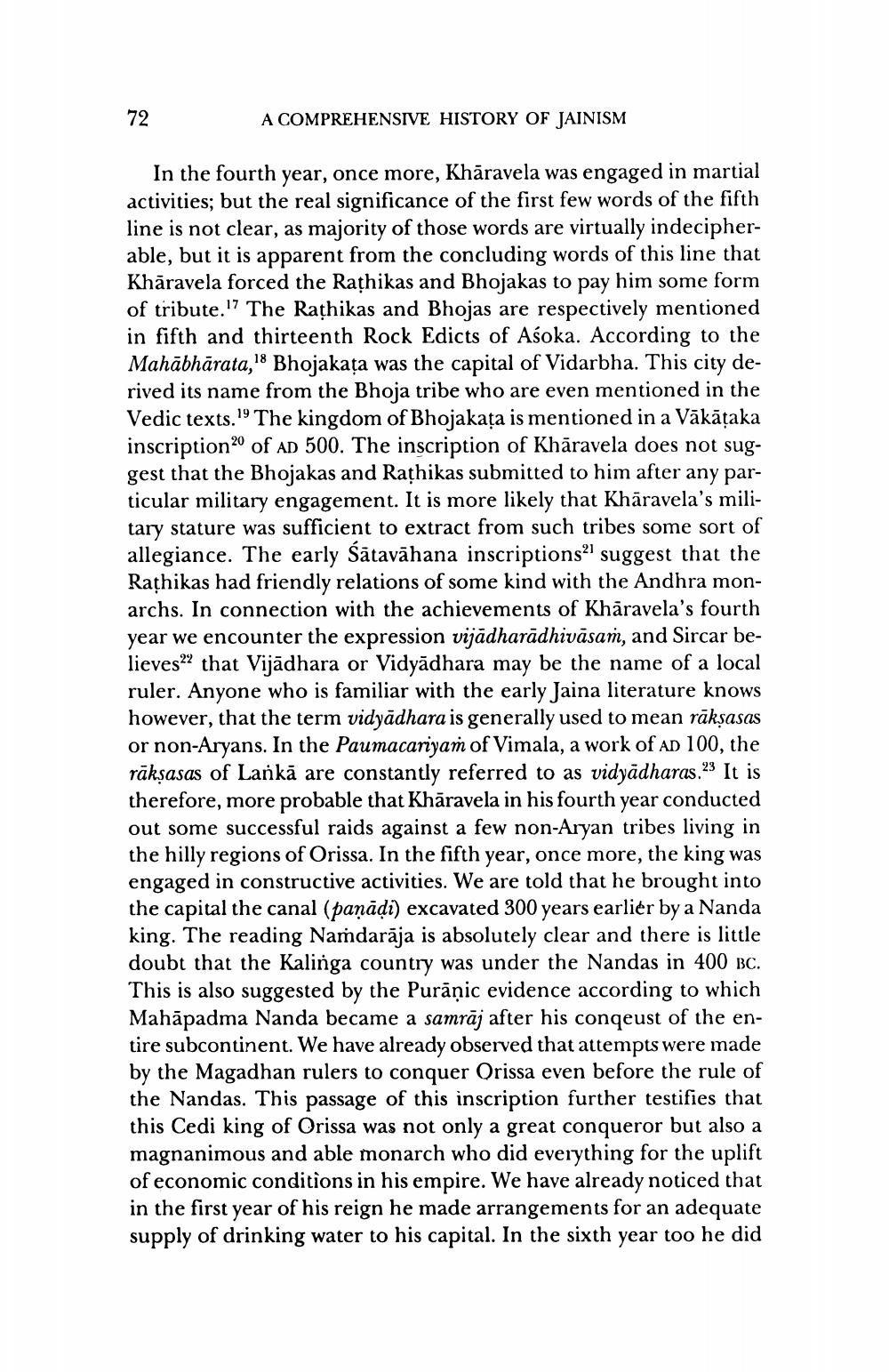________________
A COMPREHENSIVE HISTORY OF JAINISM
In the fourth year, once more, Khāravela was engaged in martial activities; but the real significance of the first few words of the fifth line is not clear, as majority of those words are virtually indecipherable, but it is apparent from the concluding words of this line that Khāravela forced the Rathikas and Bhojakas to pay him some form of tribute.!The Rathikas and Bhojas are respectively mentioned in fifth and thirteenth Rock Edicts of Asoka. According to the Mahābhārata,'' Bhojakața was the capital of Vidarbha. This city derived its name from the Bhoja tribe who are even mentioned in the Vedic texts.' The kingdom of Bhojakața is mentioned in a Vākāțaka inscription20 of AD 500. The inscription of Khāravela does not suggest that the Bhojakas and Rathikas submitted to him after any particular military engagement. It is more likely that Khāravela's military stature was sufficient to extract from such tribes some sort of allegiance. The early Sātavāhana inscriptions suggest that the Rathikas had friendly relations of some kind with the Andhra monarchs. In connection with the achievements of Khāravela's fourth year we encounter the expression vijādharādhivāsam, and Sircar believes that Vijādhara or Vidyādhara may be the name of a local ruler. Anyone who is familiar with the early Jaina literature knows however, that the term vidyādhara is generally used to mean rākṣasas or non-Aryans. In the Paumacariyam of Vimala, a work of AD 100, the rāksasas of Lankā are constantly referred to as vidyādharas. 23 It is therefore, more probable that Khāravela in his fourth year conducted out some successful raids against a few non-Aryan tribes living in the hilly regions of Orissa. In the fifth year, once more, the king was engaged in constructive activities. We are told that he brought into the capital the canal (paņādi) excavated 300 years earlier by a Nanda king. The reading Namdarāja is absolutely clear and there is little doubt that the Kalinga country was under the Nandas in 400 BC. This is also suggested by the Purāņic evidence according to which Mahāpadma Nanda became a samraj after his conqeust of the entire subcontinent. We have already observed that attempts were made by the Magadhan rulers to conquer Orissa even before the rule of the Nandas. This passage of this inscription further testifies that this Cedi king of Orissa was not only a great conqueror but also a magnanimous and able monarch who did everything for the uplift of economic conditions in his empire. We have already noticed that in the first year of his reign he made arrangements for an adequate supply of drinking water to his capital. In the sixth year too he did




